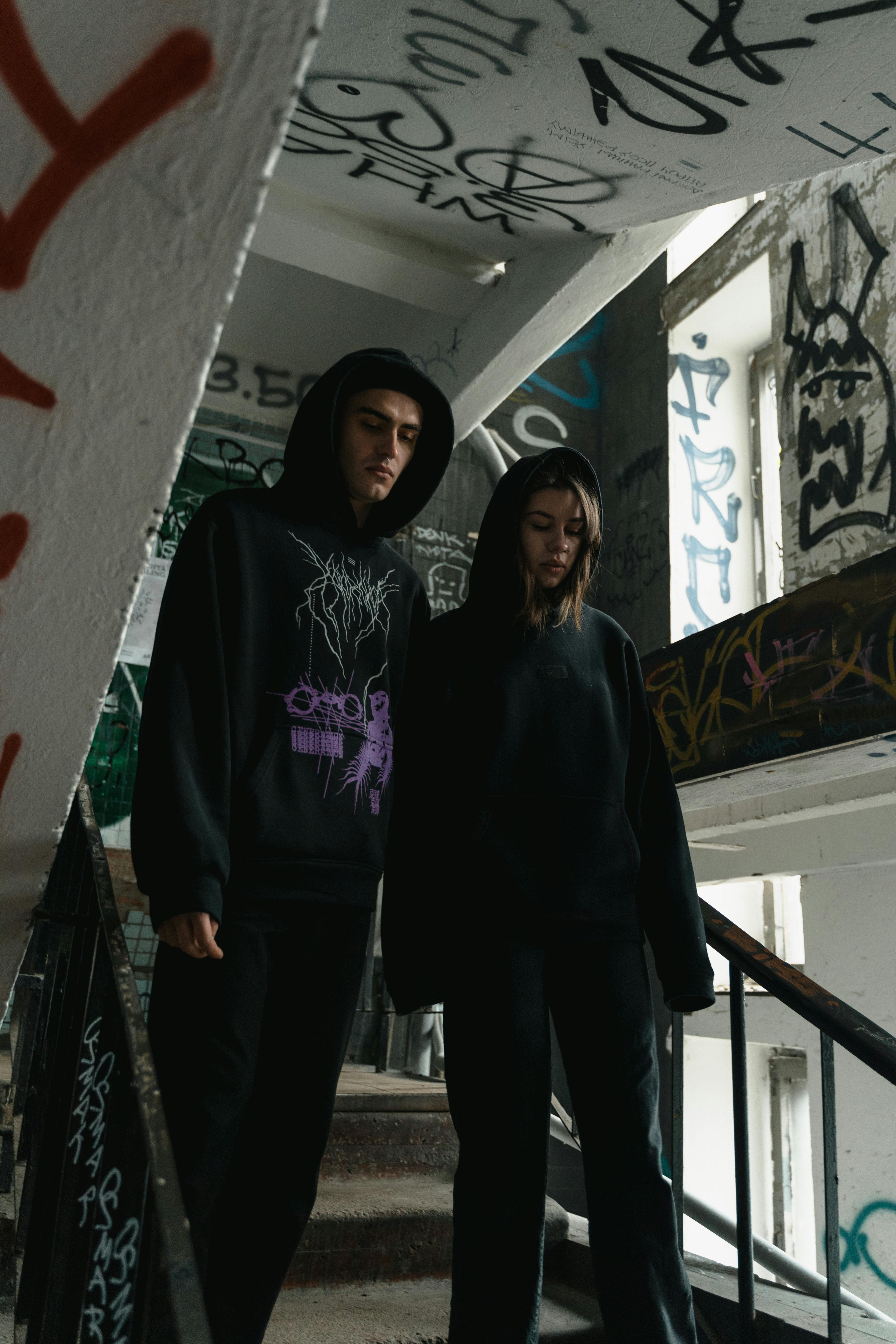There’s something magnetic about imperfection. About the frayed edge of a hem, the scuffed sole of a boot, the acid-washed tee that looks like it’s survived decades of noise and rebellion. Grunge, as a style, was never meant to be pretty. It was born from the wreckage of glossed-over culture — a reaction against the polished and pristine. But what’s fascinating is how, decades later, we’re still drawn to it. In a world obsessed with filters and control, the chaos of grunge feels like truth.
Psychologically, our attraction to grunge is a craving for authenticity. According to cultural theorists and fashion psychologists, distressed clothing gives form to emotional texture — the visible wear mirrors our own inner fractures. When we wear something imperfect, it tells the world we’re real, unpolished, and unafraid to show it. The psychology here isn’t about aesthetics alone — it’s about identity.
Grunge first emerged in the late ‘80s and early ‘90s from the music scene of the Pacific Northwest. Bands like Nirvana, Soundgarden, and Alice in Chains didn’t set out to start a fashion movement — they simply were. Oversized flannels, ripped jeans, and thrifted tees weren’t a statement at first — they were survival, practicality, and defiance rolled into one. But when the media caught on, the look became a cultural shorthand for disillusionment — a uniform for those who refused to play the part.
Today’s grunge revival is less about rebellion against the mainstream and more about reclaiming imperfection. The texture of a snow-washed shirt or heavyweight hoodie has become a kind of emotional language — comfort through chaos. You can see this shift in modern streetwear, where oversized silhouettes and washed-out tones dominate. The look is looser, freer, more introspective. It’s not about standing out; it’s about belonging to yourself.
Take All Flesh Rots’ collection, for example — pieces like the Botanical Dreams Acid Wash Tee or the Decay Snow Wash Shirt speak directly to this psychological pull. The fabrics are intentionally distressed, the cotton heavy and tactile — designed not just to be worn, but felt. Each garment embodies a story of transformation: softness meeting edge, beauty emerging from erosion. They echo what psychologists describe as “aesthetic roughness” — our natural draw to irregular forms that mirror the complexity of human emotion.
And this isn’t just theory. Studies on the psychology of fashion (like those published in Fashion Theory and Psychology Today) show that texture and imperfection activate emotional engagement. Smooth, polished materials might feel safe, but rough textures evoke intrigue, comfort, and even nostalgia. It’s why we reach for a broken-in hoodie over a crisp new one — it carries history. It feels alive.
There’s also a deeper cultural context. Grunge appeals to what sociologists call “post-authentic identity” — the idea that in a hyper-digital world, where everything can be faked, authenticity becomes performance. When you wear an oversized acid-wash tee with a cracked print, it’s a rejection of perfection culture. It’s a statement that says, “I’m not trying to impress you. I’m trying to exist.”
That’s why the grunge aesthetic continues to evolve rather than fade. It’s adaptable — capable of holding space for queerness, softness, and vulnerability, not just angst. At All Flesh Rots, this ethos is reimagined through designs that merge decay with rebirth: a cracked face asleep, a snake shedding its skin, a flower blooming in rot. Each piece becomes a small act of reclamation — proof that beauty doesn’t disappear when it breaks; it transforms.
Styling grunge in the modern sense isn’t about replicating the ‘90s uniform. It’s about translating that energy into your own life. Pair a heavyweight sun-faded hoodie with relaxed denim and worn boots. Layer loose-fit acid wash tees with chains, rings, or an open flannel. Play with silhouettes — drop shoulders, baggy sleeves, cropped jackets. The point isn’t to look careless; it’s to look comfortable in chaos.
Ultimately, the reason we’re drawn to grunge — to washed textures, faded cotton, oversized silhouettes — isn’t nostalgia. It’s instinct. It’s the same reason we find cracks in walls beautiful, or driftwood soothing to touch. Grunge reminds us that nothing lasts forever — not fabric, not flesh, not feelings — and that’s okay. Because in that decay lies truth.
When you wear something imperfect, something a little broken, you’re wearing a story. And stories are what make us human.
